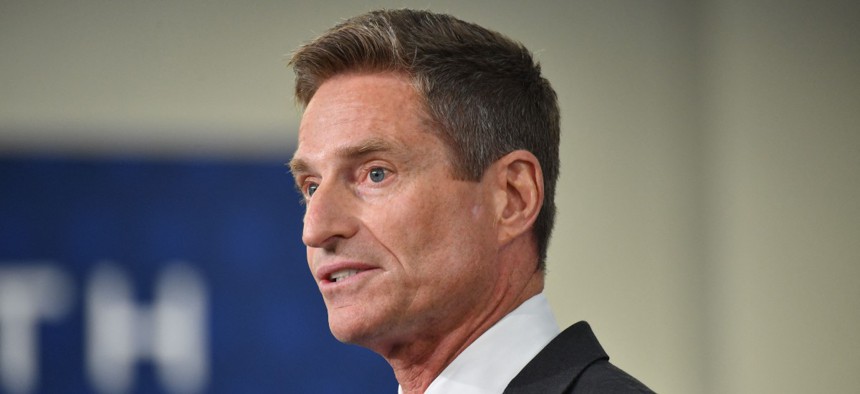
Lockheed Martin's CEO Jim Taiclet visiting a company facility in Troy, Alabama in 2022. Photo by Nicholas Kamm / AFP via Getty Images
Lockheed's CEO reacts to Trump's acquisition overhaul orders
In talking with Wall Street, Jim Taiclet highlights how many of the regulations and statutes that have evolved over decades look poised to be "really scrutinized and reduced."
Work on structural changes to how federal agencies buy products and services from the private sector appears to be going full-steam ahead amid a series of executive orders and process to rewrite acquisition regulations.
That topic of a leaner, quicker purchasing framework for the Defense Department is also one Jim Taiclet has spoken of frequently since he joined Lockheed Martin as CEO in 2021 after several years the telecommunications industry.
During Lockheed’s first quarter earnings call with investors Tuesday, Taiclet provided his reaction to the ongoing Federal Acquisition Regulation overhaul and trio of executive orders focused on DOD’s own acquisition framework.
“One of the biggest issues, where there's limitations on the speed at which digital technology and even the most advanced physical technologies can be introduced into the national defense enterprise, is the red tape,” Taiclet told analysts. “The statutes, regulations, constraints, audits that have evolved through the DOD bureaucracy over decades, have never reversed themselves. This is a chance for those to be really scrutinized and reduced.”
Under one executive order signed April 9, Defense Secretary Pete Hegseth was given 90 days to turn in a plan for a new acquisition system that uses commercial solutions “to the maximum extent possible” and leans more heavily on non-FAR contracting approaches.
Hegseth is also required to submit a blueprint for training DOD’s acquisition workforce on the new system.
That DOD-focused order preceded another pair signed by President Trump on April 15 that directs an overhaul of the FAR and agencies to prioritize buys of commercially-available items as required by the Federal Acquisition Streamlining Act of 1994.
As Taiclet pointed out in the call, the definition of what he called “our industry” is broad when looking beyond just the world’s largest defense contractor and its handful of main competitors.
In fact, Taiclet has used his four-year tenure as CEO of Lockheed as a period of pushing the company to having a more open tent for collaborations with tech companies and others outside of the traditional ecosystem.
“It includes major technology companies such as Verizon and NVIDIA and Microsoft that are our partners, it includes midsize and new entrants,” Taiclet said. “We want the best of U.S. industry and technology development applied to the national security space.
“The one thing I want to make sure that we get a chance to do, it's a chance to compete on every dimension,” he added. “I used to be captain of the Air Force rugby team, and all I want to do is get my team on the field and get in the game. I don't care if it's a small contract, a big one.”

